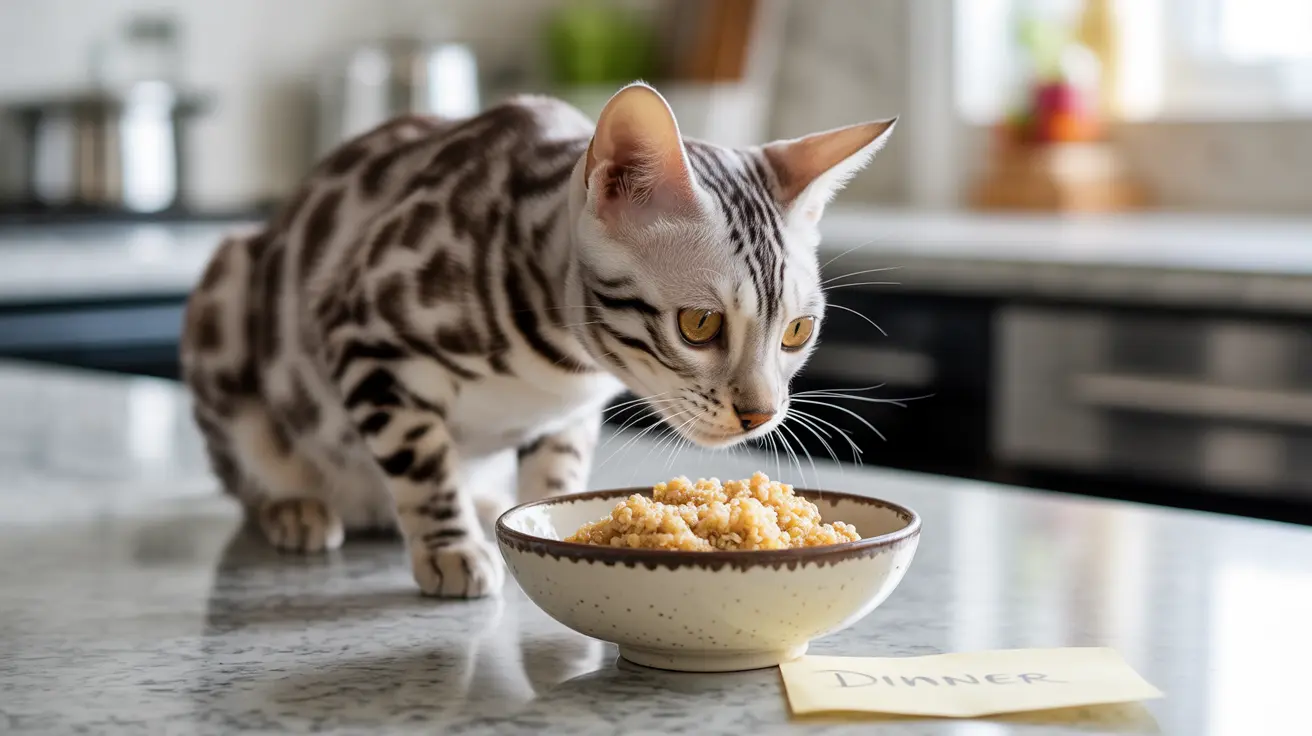As more pet owners explore healthy food options for their feline friends, quinoa has emerged as an intriguing dietary addition. This nutritious pseudocereal has found its way into commercial cat foods and sparked curiosity among cat parents. But can cats safely eat quinoa, and what should you know before adding it to their diet?
In this comprehensive guide, we'll explore the benefits, risks, and proper ways to introduce quinoa to your cat's diet, ensuring you make informed decisions about your pet's nutrition.
Understanding Quinoa's Nutritional Value for Cats
Quinoa stands out from traditional grains due to its impressive nutritional profile. It contains all essential amino acids, making it a complete protein source - though not a replacement for animal protein. For cats, quinoa offers several beneficial nutrients:
- High-quality plant protein
- Dietary fiber for digestive health
- Essential minerals like magnesium and iron
- B-vitamins and antioxidants
- Low glycemic index
Safety and Benefits of Quinoa for Cats
While cats are obligate carnivores requiring primarily animal-based proteins, quinoa can serve as a healthy supplement when properly prepared and portioned. The benefits include:
- Improved digestive health through added fiber
- Support for weight management
- Alternative to common grain allergens
- Additional nutrients to complement their primary diet
How to Properly Prepare Quinoa for Cats
Proper preparation is crucial for safely feeding quinoa to your cat:
- Rinse thoroughly before cooking
- Cook in plain water until fully done
- Avoid all seasonings, oils, and additives
- Allow to cool completely before serving
- Start with small portions mixed into regular food
Guidelines for Feeding Quinoa to Cats
When introducing quinoa to your cat's diet, follow these important guidelines:
- Limit quinoa to no more than 10% of daily caloric intake
- Start with tiny amounts to test tolerance
- Monitor for any digestive issues
- Use as a supplement, not a meal replacement
- Always maintain primary protein sources from meat
Frequently Asked Questions
Can cats safely eat quinoa, and what are the health benefits of feeding it to them?
Yes, cats can safely eat quinoa in moderation. Benefits include added fiber for digestive health, essential minerals, and antioxidants. However, it should only be offered as a supplement to their primary meat-based diet.
How much quinoa can I give my cat without causing digestive problems?
Start with a teaspoon or less mixed into their regular food, no more than 2-3 times per week. Quinoa should not exceed 10% of their daily caloric intake to prevent nutritional imbalances.
What is the proper way to prepare quinoa before offering it to my cat?
Cook quinoa thoroughly in plain water, without any seasonings, oils, or additives. Rinse before cooking, and allow it to cool completely before serving.
Does quinoa provide all the essential nutrients cats need, or can it replace animal protein?
No, quinoa cannot replace animal protein in a cat's diet. While nutritious, it lacks essential nutrients like taurine that cats must get from meat sources. Use quinoa only as a supplement to a complete, meat-based diet.
Are there any risks or side effects I should watch for when feeding quinoa to my cat?
Watch for signs of digestive upset, including diarrhea, vomiting, or decreased appetite. Some cats may have individual sensitivities or intolerances to quinoa. Discontinue use if any adverse reactions occur.
Conclusion
While quinoa can be a healthy addition to your cat's diet when properly prepared and portioned, it should never replace their primary meat-based nutrition. Always introduce new foods gradually and consult with your veterinarian about incorporating quinoa into your cat's specific dietary needs.
Remember that every cat is unique, and what works for one may not work for another. Monitor your pet's response to quinoa and adjust portions accordingly to ensure their optimal health and well-being.






